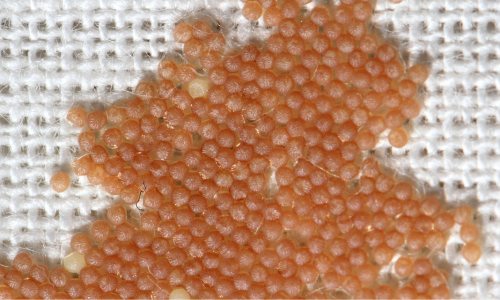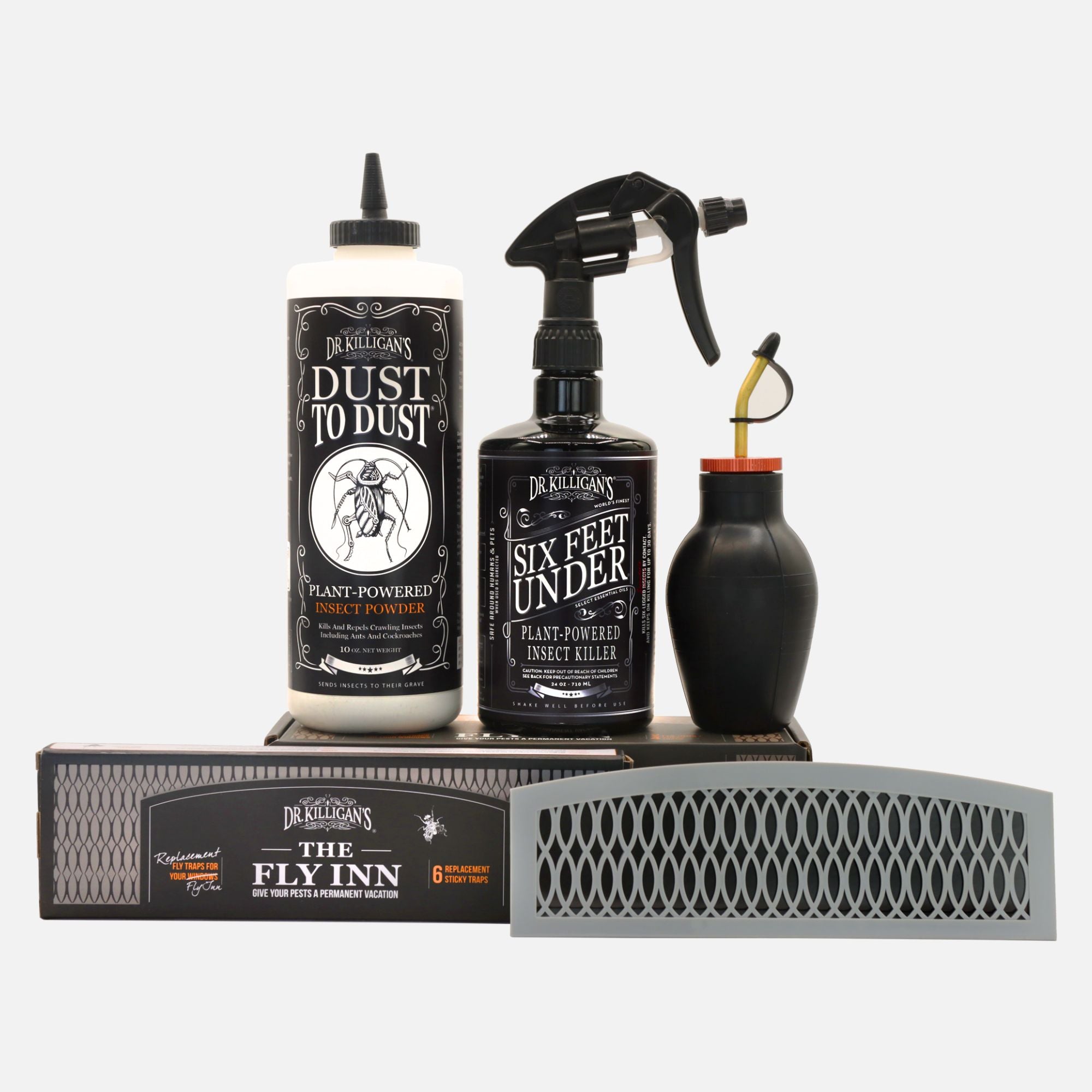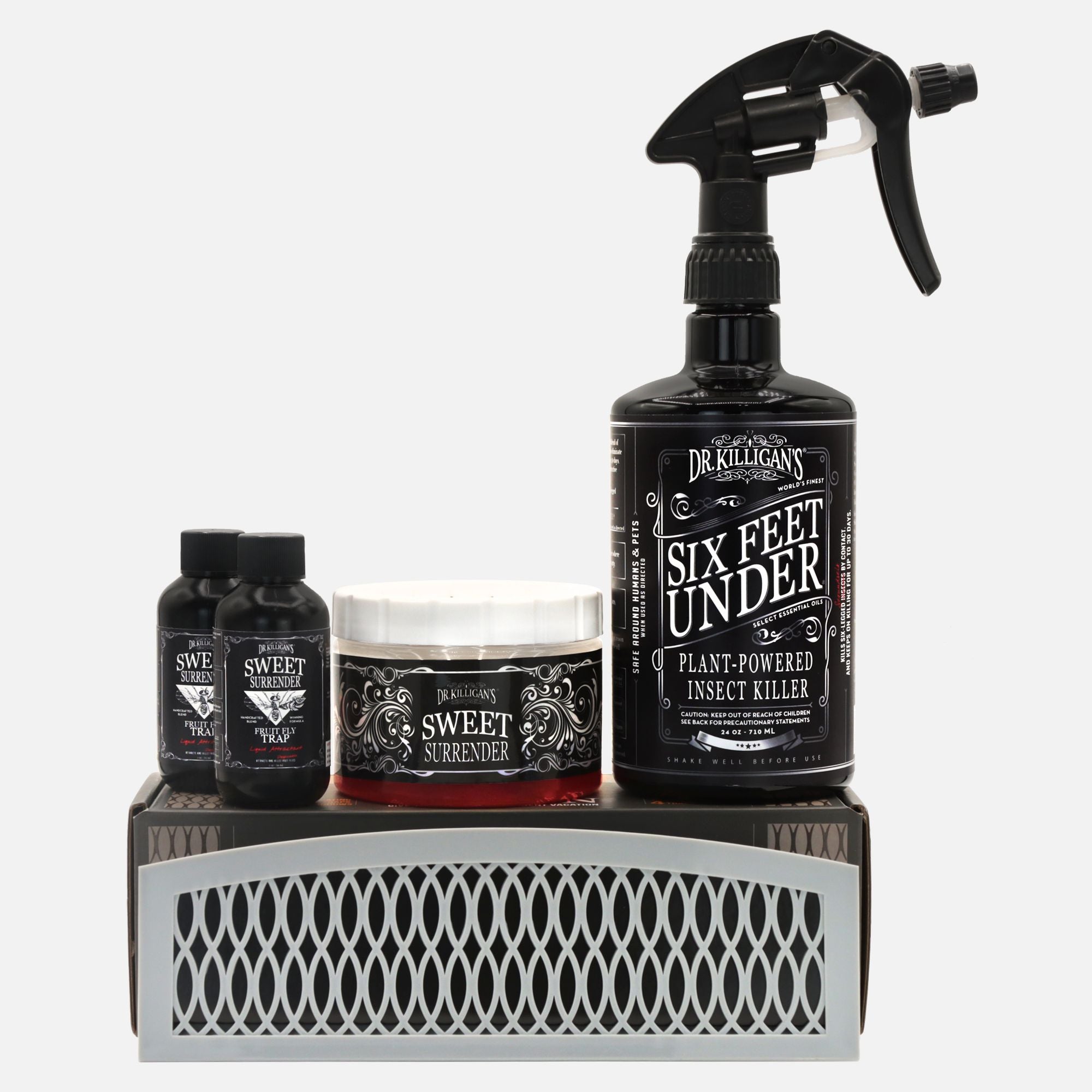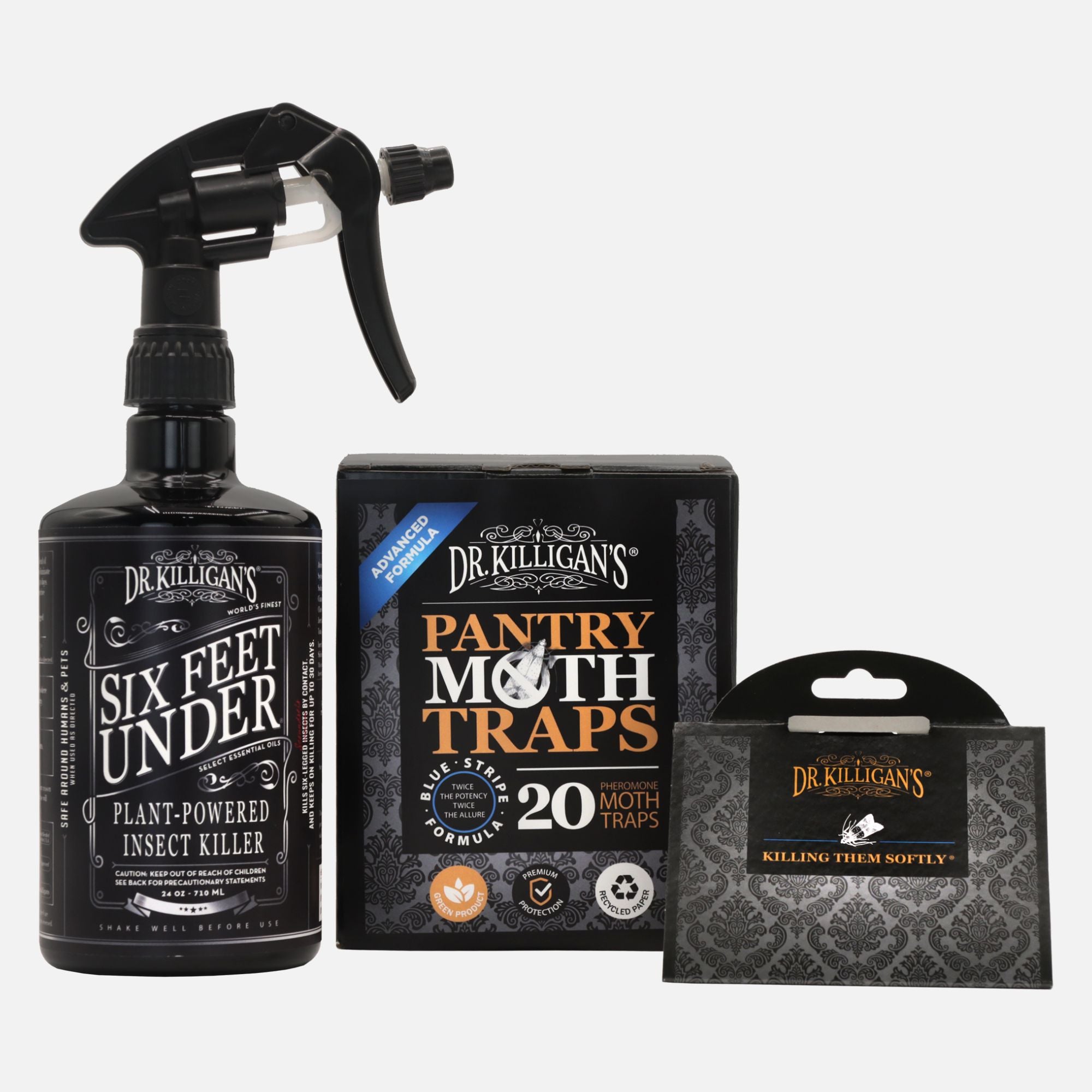Updated on July 18th, 2024
When you discover a clothing moth infestation, it often feels like they appeared out of nowhere. Their entry into your home is usually quiet and sneaky.
How could you have noticed the tiny cluster of nearly invisible, creamy-colored eggs hidden in the fold of your cashmere sweater? Or the pinhead-sized eggs on the cuff of your silk blouse—picked up from a local consignment shop? And that wool blanket stored in your garage, who would think to check if it harbored nearly 40 yellow-colored eggs in its seam?
>>> Shop Dr. Killigan's Premium Clothing Moth Traps now
In your home, infestations generally start with these unnoticed eggs. While you might swat away an adult moth flying through your home, eggs are much more insidious.
Arm yourself with knowledge about where clothing moths come from to prevent them from infiltrating your precious wardrobe.
What do clothing moths eat?

Clothing moths, specifically the webbing clothes moth (Tineola bisselliella) and the case-bearing clothes moth (Tinea pellionella) primarily feed on materials containing keratin, a protein found in natural fibers such as wool, silk and fur.
They are also drawn to fibers soiled with sweat, food or other organic matter. Since clothing moths do not drink water, they derive the necessary moisture from human perspiration and bodily fluids left on clothing.
Common targets include wool blankets, silk garments, cashmere scarves and even leather items. Unseen areas like ductwork or storage may also harbor accumulations of pet hair or other keratin-rich debris that attract these moths.
Note: For a comprehensive list of what clothing moths consume, read 'Do clothing moths actually eat clothes?' It offers extensive insights that could help you better grasp and combat these pests.
Where do these moths come from?
Understanding where clothing moths originate is crucial to preventing and managing infestations. Here are six common sources of clothing moth infestations:
- Used clothes: Moths often enter homes through second-hand clothes made from natural fibers like cashmere, wool, fur, silk, feathers, felt and leather. These can be sourced from consignment stores, thrift shops, garage sales or even as hand-me-downs, providing essential nutrients for moth larvae.
- Dirty, unattended clothes: Clothing stained with sweat, food or other organic substances attract moths. Such garments provide a rich source of nutrients for larvae, underscoring the importance of regular laundry practices.
- Used furniture: Upholstered furniture, especially items containing natural materials—like wool, feathers or horsehair—can harbor moth infestations. Moths can inhabit both visible and internal parts of furniture, complicating detection and eradication.
- Stored items: Garages, sheds or attics that are warm, dark, humid and undisturbed serve as ideal moth breeding grounds. Items stored in these conditions—particularly if not in airtight or vacuum-sealed containers—are at high risk.
- Vents and ducts: Moth larvae feed on lint, human hair, shed pet hair and other debris found in household ductwork. These hidden locations offer a protected environment for moths to grow.
- Bird nests and animal carcasses: In areas like attics, chimneys or wall cavities, bird nests and animal carcasses provide a plentiful supply of materials for moth larvae. Nesting materials and animal remains together create an ideal habitat for sustaining moth populations.
Why didn’t I know that I’d brought clothing moths into my home?
Clothing moth eggs and larvae often go undetected, allowing them to enter your home unnoticed and begin their destructive cycle.

You were likely unaware of their presence because of these four reasons:
- Egg size: Their eggs are extremely small, measuring about 0.5 millimeters. For comparison, a sharp pencil point is about 1 millimeter.
- Larvae size: The freshly hatched larvae are only a few millimeters long but soon grow to about 1-1.5 cm.
- Dormant eggs: The eggs remain dormant until they enter an environment like a home, which is warm, dark and humid—ideal conditions for them to hatch.
- Egg visibility: Even if the eggs are visible, they are inconspicuous, typically laid in the crevices, folds or seams of clothing, such as the cuffs or collars, or other items.
How do I get rid of clothing moths?
Clothing moths have been around for a very long time. Here are five quick steps for getting rid of them.
Note: If you have an infestation, read How get rid of clothing moths.

- Identify the winged pest: Ensure that it is not a pantry moth (which does not eat clothing) or a carpet beetle (which does).
- Launder: Launder, dry-clean, freeze or discard infested items and susceptible articles.
- Thoroughly vacuum: Vacuum floors, carpets, heating vents and areas around feeding sites like beneath furniture and inside closets to remove larvae, hair and lint.
- Spray Six Feet Under: Spray on baseboards, on walls, in corners and on shelves—anywhere where the adult clothing moths may have laid eggs. This non-toxic spray will ensure the death of any eggs or larvae.
- Place Clothing Moth Traps: Traps are invaluable and necessary to both alert you to infestations (before they get out of hand) and to help control current infestations. Male clothing moths are attracted to traps by powerful pheromones and captured with strong adhesive, effectively ending their mating cycle.
Note: Avoid using mothballs due to toxicity.





















